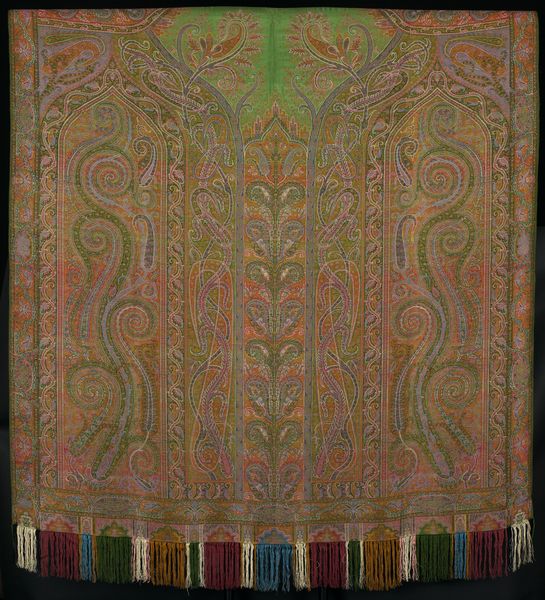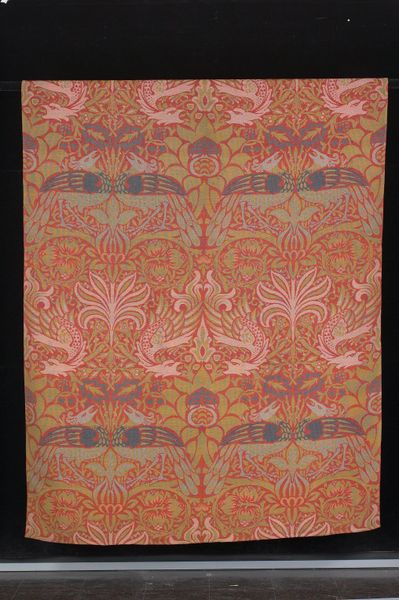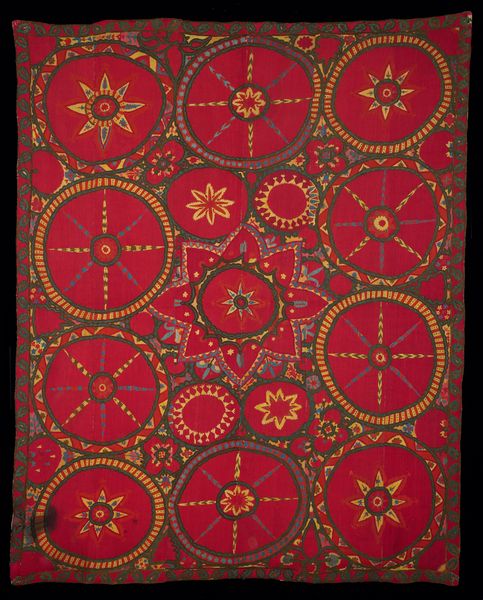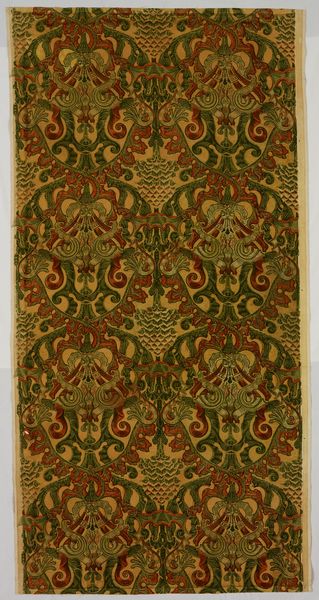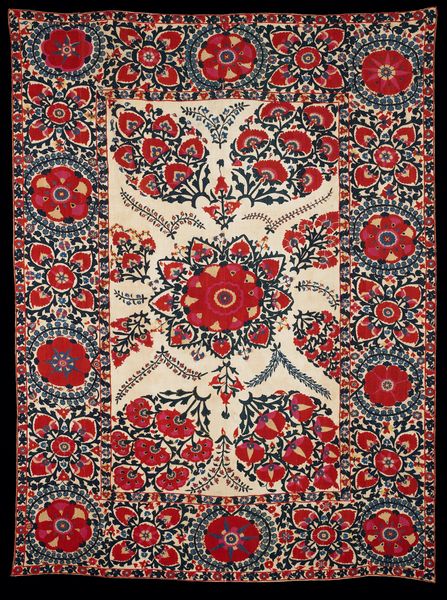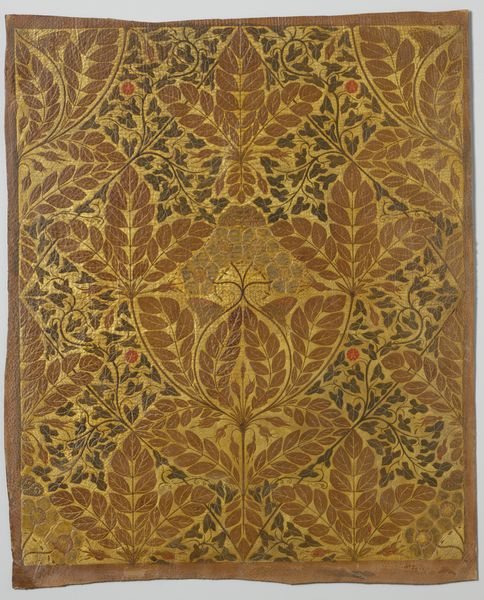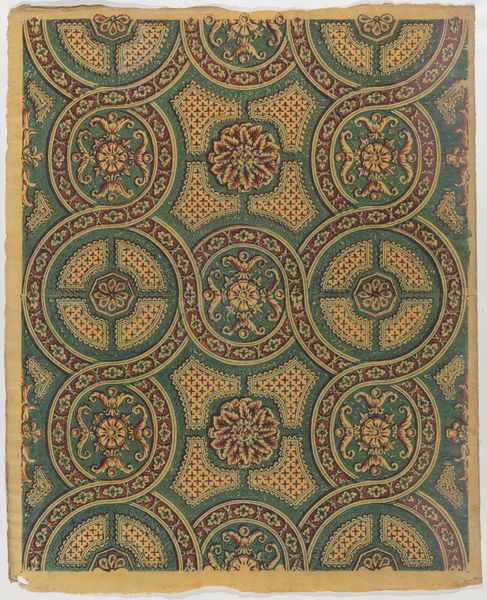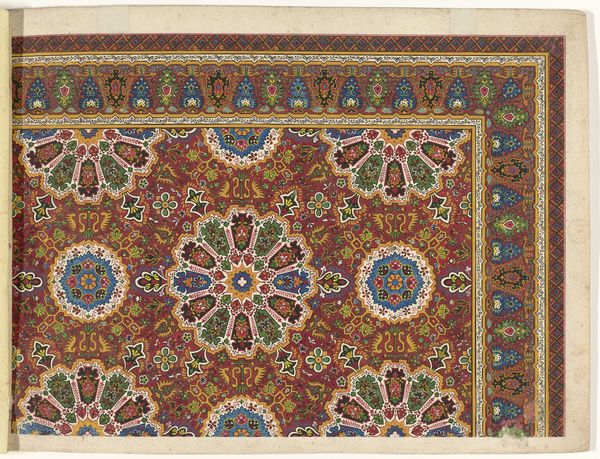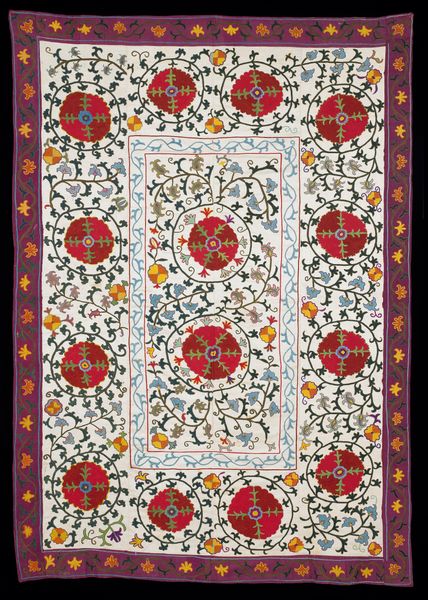
weaving, textile
#
weaving
#
textile
#
geometric pattern
#
organic pattern
#
intricate pattern
#
pattern repetition
Dimensions: 380.7 × 163.5 cm (149 7/8 × 64 3/8 in.)
Copyright: Public Domain
Curator: Looking at this extraordinary piece, we see a woven wool shawl, dating from the late 19th century. It comes to us from Clabburn, Sons and Crisp. Editor: What immediately strikes me is its warmth. Not just in material but the colour palette – these sunset hues feel so inviting, yet the pattern itself seems quite intense and formal. Curator: That's interesting. Its regularity is part of what defines the object. Paisley patterns dominate; in this era, they became closely associated with the Arts and Crafts movement. The textile manufacturing trade tried to achieve ever more sophisticated decorative styles. Editor: The paisley motif itself has such an incredible history, moving across cultures for centuries. It appears in ancient Persia, representing the tree of life and often standing for fertility. To me, the repetition is not only decorative, but deeply evocative, conjuring cycles and continuity. Curator: Indeed. By the 19th century, these shawls had become hugely fashionable status symbols in Europe, partly spurred by their association with the exotic and Eastern. The Industrial Revolution mechanized production to keep up with the rising demand from wealthy clientele. Editor: Considering this mass production, do you see the makers retaining any individual creativity or symbolic intentionality? Curator: I believe so. The dense arrangement of the paisley, mixed with smaller geometric floral elements, speak to the hand-craft aesthetic which valued intricacy as a demonstration of artisanal skill and individual engagement in every unique pattern. Editor: And the fringe is fantastic. Little bursts of color in neat cadence! It gives an impression of the rhythm found in music or dance. All in all, an engaging example of how organic forms combine with calculated design, creating a feast for the eyes but a comfort for the soul. Curator: Definitely, reflecting on this wool textile provides insights on the industrial influences combined with a craft based intention of this moment in social history. Editor: Absolutely, and examining this item through the lenses of art history as well as a fascination with enduring symbols reminds us of art’s significance beyond pure aesthetics.
Comments
No comments
Be the first to comment and join the conversation on the ultimate creative platform.
